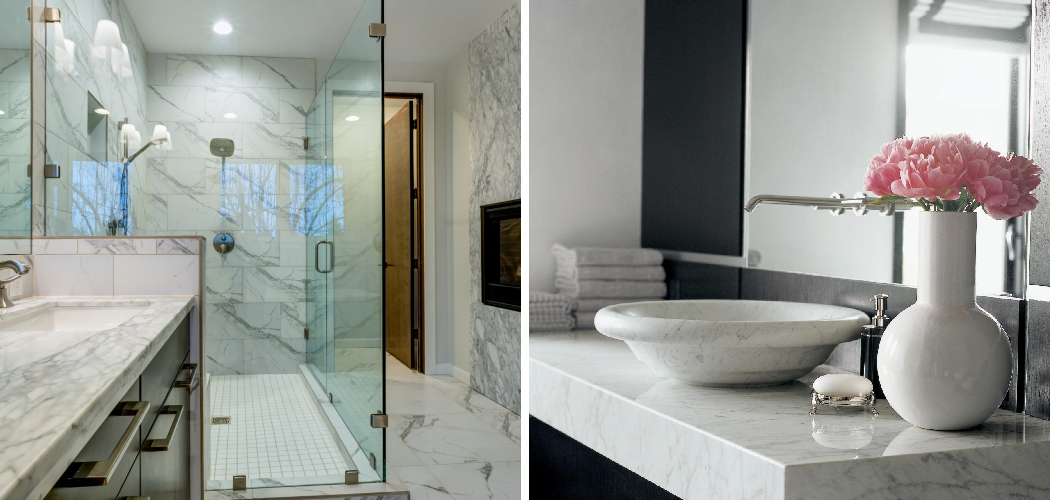Are you tired of seeing those white marks on your marble countertop? Is that annoying stain ruining your bathroom decor? Worry no more, because we’ve got you covered with some easy tips on how to clean marble countertops in bathrooms.
Marble countertops in bathrooms add a touch of elegance and sophistication, but they require proper care to maintain their pristine appearance. Unlike other materials, marble is porous and prone to staining and etching from acidic substances. This makes cleaning and maintenance particularly critical to preserving its beauty and longevity.
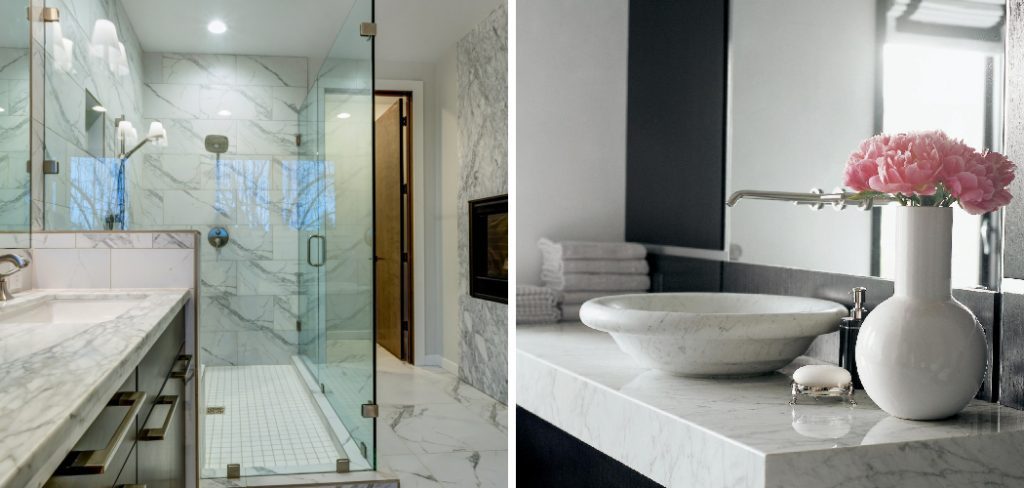
In this guide, we’ll explain the essential steps and best practices for cleaning your marble countertops, ensuring they remain as stunning and lustrous as the day they were installed. From selecting the right cleaning products to routine maintenance tips, you’ll find everything you need to keep your marble surfaces in top condition.
What Will You Need?
Before jumping into the cleaning process, let’s gather all the necessary tools and materials. Using the right products and equipment is crucial as using harsh chemicals or abrasive tools can cause irreversible damage to your marble countertops. Here are some essential items you’ll need:
- Soft microfiber cloth
- Mild dish soap or pH-neutral cleaner
- Water
- Baking soda (for tougher stains)
- Hydrogen peroxide (optional)
- Sealant (for sealing the surface after cleaning)
Once you have all these items, we can move on to the actual cleaning process.
10 Easy Steps on How to Clean Marble Countertops in Bathrooms
Step 1. Dust and Wipe Down the Surface
Remove any loose debris, dust, or grime from the marble countertop. Use a soft microfiber cloth to dust off the surface gently. This step is essential as it helps prevent any abrasive particles from scratching your marble when you proceed to the next cleaning steps. Ensure that the cloth is clean and dry to avoid adding moisture to the countertop at this point.
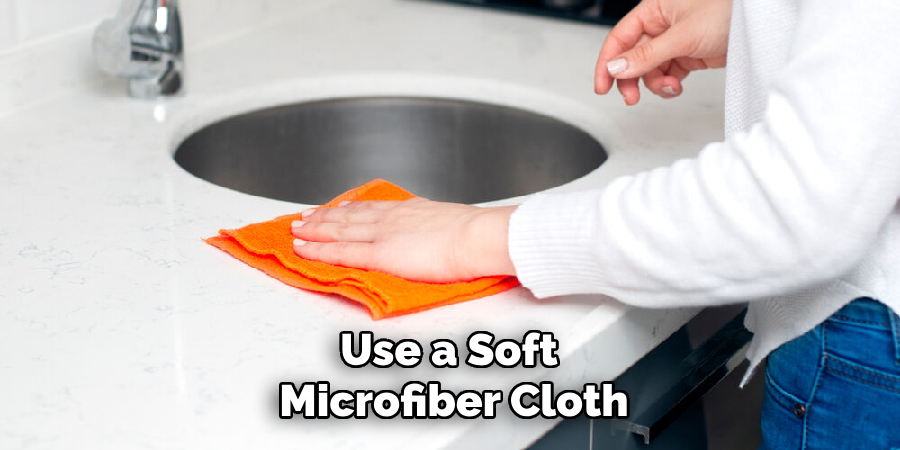
Step 2. Prepare a Cleaning Solution
Next, it’s time to prepare your cleaning solution. Fill a bucket or a bowl with warm water and add a few drops of mild dish soap or a pH-neutral cleaner. These cleaners are gentle yet effective in removing dirt without damaging the marble’s surface. Avoid using acidic or citrus-based cleaners as they can cause etching and dullness on your marble countertops.
Step 3. Wet the Cloth and Wring Out Excess Water
Immerse your soft microfiber cloth into the cleaning solution you prepared in the previous step. Ensure the cloth soaks enough of the solution, but be careful not to leave it dripping wet. Wring out the excess water thoroughly until the cloth is damp but not soaked. A wet cloth will enable you to clean the marble surface effectively without leaving excess moisture, which can seep into the porous marble and potentially cause damage.
Step 4. Gently Clean the Countertop
With your damp microfiber cloth, gently wipe down the entire marble countertop. Use soft, circular motions to lift and remove dirt or grime clinging to the surface. Avoid scrubbing aggressively, as marble is delicate and can scratch easily. Pay special attention to areas with visible stains or buildup. If necessary, rinse the cloth in the cleaning solution and wring it out again to ensure you use a clean portion of the fabric throughout the process.
Step 5. Address Tough Stains
Consider using baking soda or hydrogen peroxide for stricter stains that the mild cleaning solution couldn’t remove. Create a paste using baking soda and water, then apply it to the stained area. Let the paste sit for a few hours or overnight, depending on the severity of the stain. You can use a small amount of hydrogen peroxide for deeper stains instead. Remember always to perform a spot test in an inconspicuous area first to ensure these substances do not damage your marble.
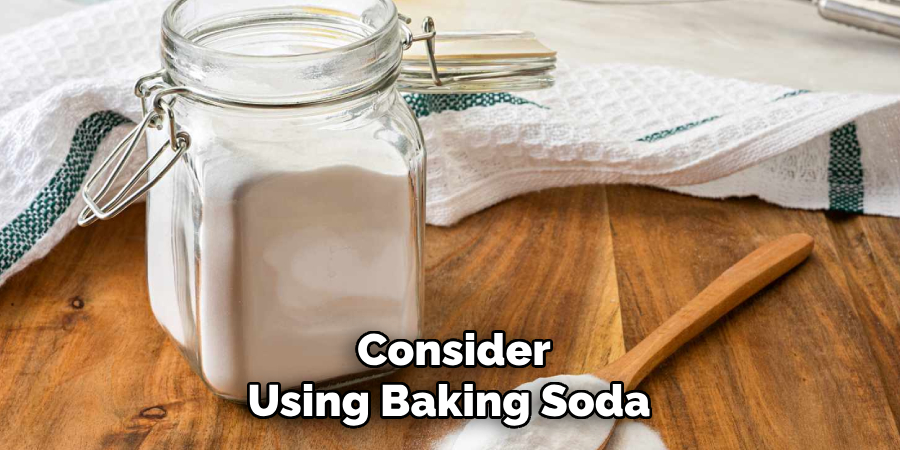
Step 6. Rinse the Surface Thoroughly
After addressing any tough stains, it’s crucial to rinse the marble countertop thoroughly. Dampen a clean microfiber cloth with plain water and wipe down the entire surface to remove any remnants of the cleaning solution or stain-removing paste. Again, use gentle, circular motions to avoid scratching the marble. Rinsing is essential to ensure no residue is left behind, which could dull the marble’s natural shine.
Step 7. Dry and Buff
Once the countertop is clean, gently dry the surface with a dry microfiber cloth. Removing all moisture is critical as any remaining water can lead to potential water spots or seep into the pores of the marble. After drying, use a fresh microfiber cloth to buff the surface, enhancing the marble’s natural luster and giving it a polished look. Buffing in small circles will help leave the countertop looking glossy and pristine.
Step 8. Seal the Marble Surface
Sealing is an important step in maintaining the beauty and durability of your marble countertops. A good sealant can provide a protective layer that helps reduce the risk of staining and etching. Follow the manufacturer’s instructions on the sealant product to apply a uniform layer onto the countertop. Make sure the surface is arid before applying the sealant, and allow it to cure as recommended to ensure it provides maximum protection.
Step 9. Regular Maintenance
Routine maintenance is key to keeping your marble countertops in excellent condition. Wipe spills immediately, particularly those involving acidic substances such as lemon juice, vinegar, or cosmetics. Regularly dust and clean the surface with a damp microfiber cloth to prevent dirt buildup. Incorporate the sealing process into your cleaning routine every few months or as recommended by your sealant’s manufacturer.

Step 10. Avoid Common Mistakes
Avoid common mistakes that can damage your marble countertops. Never use abrasive pads, scrubbing brushes, or harsh chemicals, as these can scratch or dull the surface. Likewise, be cautious with acidic cleaners – always opt for pH-neutral solutions. Avoid placing hot items directly on the marble; use coasters, trivets, or placemats to protect the surface from heat damage. By being mindful of these precautions, you can significantly extend the lifespan of your marble countertops, ensuring they remain a stunning feature in your bathroom for years to come.
Following these simple steps, you can easily clean and maintain your marble countertops in your bathroom. Remember to be gentle and use mild cleaners to avoid damaging the delicate surface of the marble.
5 Additional Tips and Tricks
- Use a pH-neutral Cleaner: Marble is sensitive to acidic substances, so it’s crucial t use a pH-neutral cleaner. This helps preserve the stone’s natural gloss and prevents etching.
- Blot Spills Immediately: If you spill any liquids or substances on the marble, blot it up immediately with a soft cloth. This prevents staining and reduces the chances of permanent damage.
- Avoid Abrasive Tools: Refrain from using abrasive scrubbers or pads that can scratch the marble surface. Instead, opt for a soft microfiber cloth or a gentle sponge.
- Rinse and Dry Thoroughly: After cleaning, rinse the countertop with clean water to remove any residue and dry it thoroughly with a soft, lint-free cloth. This prevents water spots and keeps the marble looking pristine.
- Check for Proper Sealing: It’s essential to check if the marble has been appropriately sealed regularly. This can be done by pouring a small amount of water on the surface – if it beads up, the sealant is still intact. If it doesn’t bead up, then it’s time to reseal the marble to protect it from stains and damage.
These additional tips and tricks can help you maintain the beauty and longevity of your marble countertop.
5 Things You Should Avoid
- Using Acidic Cleaners: Acidic substances like vinegar, lemon juice, or commercial cleaners containing acids can cause irreparable damage to marble by etching and dulling the surface.
- Allowing Spills to Sit: Leaving spills on the marble for extended periods can lead to stains. Always clean spills promptly to maintain the stone’s pristine appearance.
- Applying Excessive Force: Avoid using hard-bristle brushes or scrubbing with too much force, as this can scratch and damage the marble’s surface.
- Using Heavy Objects: Do not place heavy objects directly on the countertops as they can cause cracks or chips. Use coasters and mats to distribute weight evenly.
- Ignoring Regular Sealing: Neglecting to reseal your marble countertops regularly leaves them vulnerable to stains and moisture penetration. Ensure to maintain an appropriate sealing schedule based on the manufacturer’s recommendations.
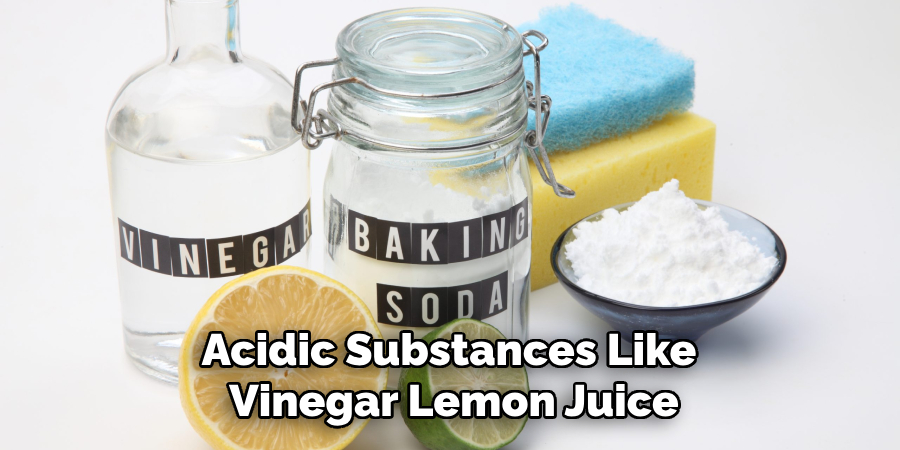
By steering clear of these common pitfalls, you can keep your bathroom marble countertops looking elegant and well-maintained for years to come.
Conclusion
How to clean marble countertops in bathrooms requires careful attention and the right techniques to ensure they remain beautiful and durable.
Following the steps and tips, you can protect your marble from damage and maintain its natural shine. Beginning with frequent dusting and using a pH-neutral cleaner helps avoid harmful chemical reactions. Immediate attention to spills and regular sealing prevent staining and water damage. Avoiding abrasive tools and excessive force safeguards against surface scratches. With consistent care and mindful practices, your marble countertops will continue to enhance the elegance of your bathroom for many years.
Taking these preventive measures not only preserves the marble’s aesthetic appeal but also contributes to its longevity and functionality.

